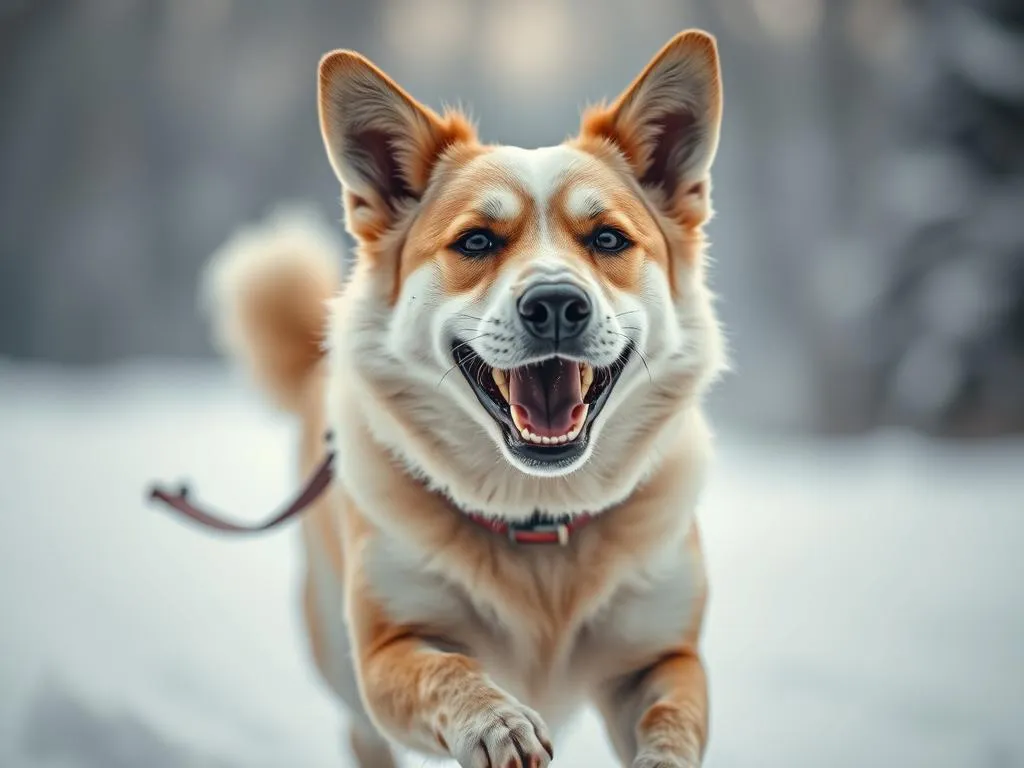
Introduction
Dog mushing is a thrilling sport and mode of transportation that has captured the hearts of many. At its core, dog mushing involves a team of dogs pulling a sled through snow-covered trails, guided by a musher. This ancient practice dates back thousands of years, with roots in the Arctic regions where it served as a vital means of transport for indigenous peoples. Over time, it has evolved into a competitive sport celebrated in various cultures, particularly in the northern parts of the globe.
From the iconic Iditarod race in Alaska to local recreational outings, dog mushing embodies a unique connection between humans and canines, emphasizing teamwork, endurance, and adventure. This article will delve into the basics of dog mushing, training techniques, the overall experience, major events, health considerations for sled dogs, and the future of this remarkable sport.
The Basics of Dog Mushing
Types of Dog Mushing
Dog mushing comes in several forms, each catering to different interests and skill levels.
-
Recreational vs. Competitive Mushing: Recreational mushing is often enjoyed by families and outdoor enthusiasts looking for adventure. Competitive mushing, on the other hand, involves rigorous training and participation in races.
-
Different Styles: The sport can be divided into various styles:
- Sprint Racing: Short, fast races usually lasting a few miles.
- Distance Racing: Longer races that can span hundreds of miles, testing endurance and strategy.
- Stage Racing: A combination of both, where mushers compete over several days, covering significant distances.
Essential Equipment
The equipment used in dog mushing is crucial for safety and performance.
-
Types of Sleds: Racing sleds are typically lighter and designed for speed, while recreational sleds are sturdier to handle varied terrains.
-
Harnesses and Lines: The harnesses used for sled dogs come in various materials and designs, ensuring comfort and efficiency.
-
Safety Gear: Both mushers and dogs require appropriate safety gear, including protective booties for dogs and insulated clothing for mushers.
Choosing the Right Dogs
Selecting the right dogs for dog mushing is a pivotal aspect of the sport.
-
Breeds Commonly Used: Alaskan Huskies, Siberian Huskies, and Malamutes are popular breeds, known for their endurance and strength.
-
Factors to Consider: When choosing a dog, consider age, temperament, and training. Puppies require different training approaches compared to adult dogs, and a dog’s personality can significantly affect team dynamics.
Training for Dog Mushing
Preparing the Dogs
Training sled dogs is a rigorous process that involves both physical and mental preparation.
-
Training Regimens: Establish a structured training schedule that gradually increases distance and intensity.
-
Importance of Fitness: Just like humans, sled dogs need to be physically fit. Incorporate play and mental stimulation to keep them engaged.
Training the Musher
While the dogs pull the sled, the musher must also be prepared.
-
Skills Required: Effective mushers need to develop skills in navigation, dog handling, and crisis management.
-
Physical and Mental Preparation: Training for long-distance mushing can be demanding. Focus on building stamina, strength, and mental resilience to face various challenges.
Building a Team
Creating a cohesive team of dogs is essential for success in dog mushing.
-
Creating a Cohesive Team: Spend time training the team together to develop trust and communication.
-
Teamwork and Communication: Mushers must learn to read their dogs’ body language and respond accordingly to ensure a harmonious working relationship.
The Mushing Experience
What to Expect on the Trail
A day in the life of a musher can be exhilarating and demanding.
-
Typical Trail Conditions: Trails can vary from groomed paths to rugged wilderness, each offering unique challenges.
-
Overview of a Day: Expect early mornings, feeding and caring for dogs, and long hours on the trail, often in stunning, serene environments.
Challenges Faced by Mushers
Dog mushing is not without its challenges.
-
Weather Conditions: Extreme cold, heavy snowfall, and blizzards can test the limits of both mushers and dogs.
-
Navigational Challenges: Mushers must be adept navigators to find their way through remote areas and deal with potential wildlife encounters.
The Joys of Mushing
Despite the challenges, the joys of dog mushing are many.
-
Connection with Nature: Mushing offers a unique opportunity to immerse oneself in the wilderness, away from the hustle of modern life.
-
Bonding with Dogs: The relationships formed with sled dogs are profound; they are not just pets but partners in adventure. The sense of community among mushers also fosters connections that enrich the experience.
Dog Mushing Events and Competitions
Major Dog Mushing Races
Races are the pinnacle of the dog mushing sport.
-
Iconic Races: The Iditarod and Yukon Quest are two of the most renowned races, attracting mushers from around the globe. Each race has its unique challenges, rules, and formats.
-
Race Formats and Rules: Understanding the specifics of each race is essential for anyone considering competition.
Participating in Local Events
Getting involved in your local mushing community can be rewarding.
-
How to Get Involved: Many regions have clubs that offer training sessions and local races, making it accessible for beginners.
-
Overview of Smaller Races: Smaller events provide excellent opportunities for novices to gain experience and confidence in the sport.
Training for Competitions
Preparing for competitive mushing requires focused training.
-
Specific Training Tips: Incorporate speed workouts, distance training, and recovery sessions into your regimen.
-
Importance of Nutrition: Proper nutrition for both dogs and mushers is crucial during training and competition, ensuring peak performance and recovery.
Health and Welfare of Sled Dogs
Nutrition for Sled Dogs
Feeding sled dogs appropriately is vital for their health and performance.
-
Dietary Needs: Dogs require a high-energy diet rich in proteins and fats, especially during training and races.
-
Importance of Hydration: Keeping dogs hydrated is equally important, particularly during strenuous activities in cold weather.
Health Monitoring and Veterinary Care
Regular veterinary care is essential for sled dogs.
-
Common Health Issues: Sled dogs can face specific health challenges, including musculoskeletal injuries and hypothermia, requiring proactive management.
-
Preventative Care: Regular health checks and vaccinations can prevent many health issues and ensure dogs are fit for mushing.
Ethical Considerations in Dog Mushing
Responsible practices are crucial for the welfare of sled dogs.
-
Responsible Breeding and Training: Ethical breeding and socialization practices contribute to a healthier, happier team of dogs.
-
Importance of Dog Welfare: Ensuring the well-being of sled dogs should always be a top priority in both recreational and competitive mushing.
The Future of Dog Mushing
Trends in the Sport
The landscape of dog mushing is evolving.
-
Impact of Technology: Advances in equipment and training methods are enhancing the sport, providing mushers with new tools for success.
-
Growing Popularity: More people are discovering dog mushing as a recreational activity, leading to a surge in interest and participation.
Environmental Considerations
Climate change poses significant challenges to mushing.
-
Impact on Mushing Trails: Warming temperatures and changing weather patterns can affect the availability and quality of trails.
-
Sustainability Practices: Many mushing communities are adopting sustainable practices to minimize environmental impact and preserve the sport for future generations.
Preserving the Tradition
Maintaining the cultural significance of dog mushing is essential.
-
Cultural Heritage: Efforts are underway to preserve the traditions and techniques passed down through generations of mushers.
-
Engaging Future Generations: Involving young people in the sport can help sustain its legacy and keep the passion for dog mushing alive.
Conclusion
The world of dog mushing is filled with unique experiences, challenges, and rewards. It provides an incredible opportunity to connect with nature, build lasting bonds with dogs, and engage with a vibrant community of fellow enthusiasts. Whether you are a seasoned musher or a curious beginner, exploring dog mushing can lead to a fulfilling lifestyle choice that celebrates adventure and companionship.
Embarking on this journey opens doors to not only personal growth but also a chance to be part of a tradition that has stood the test of time.









